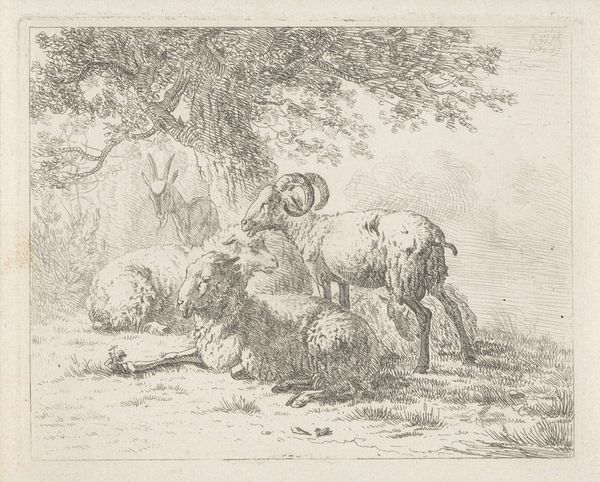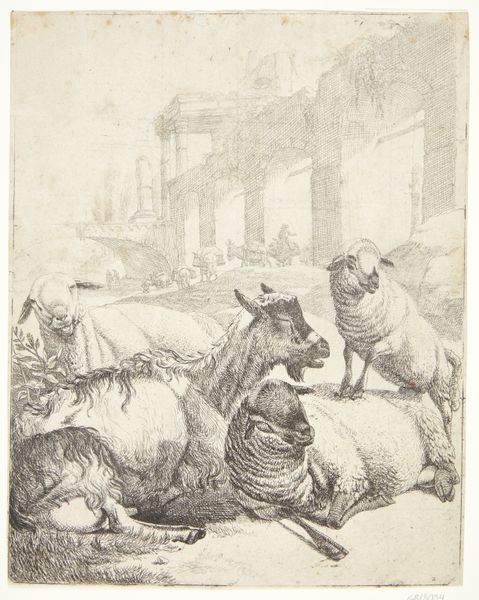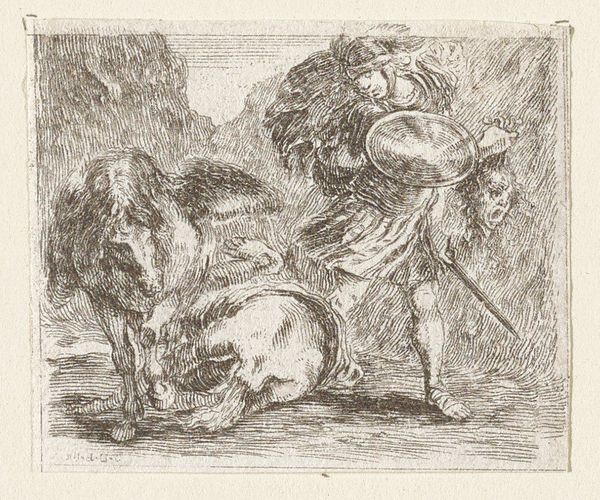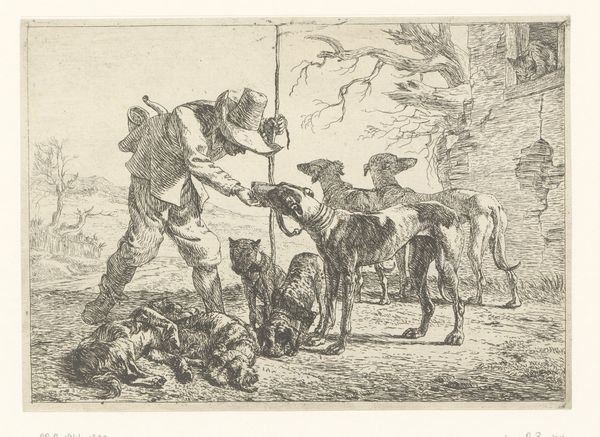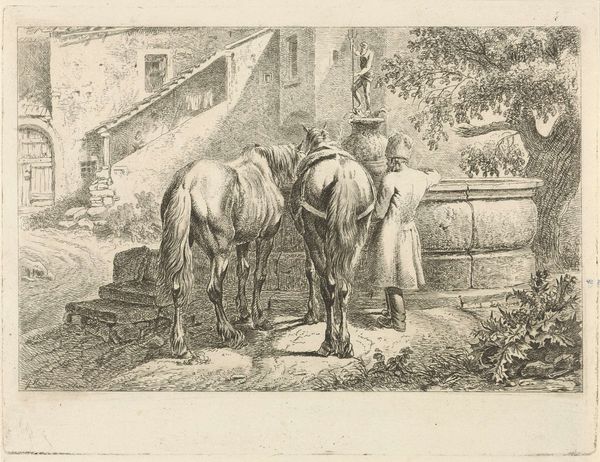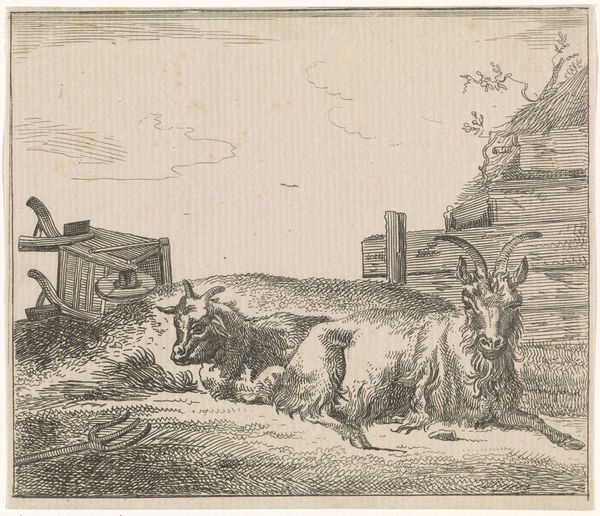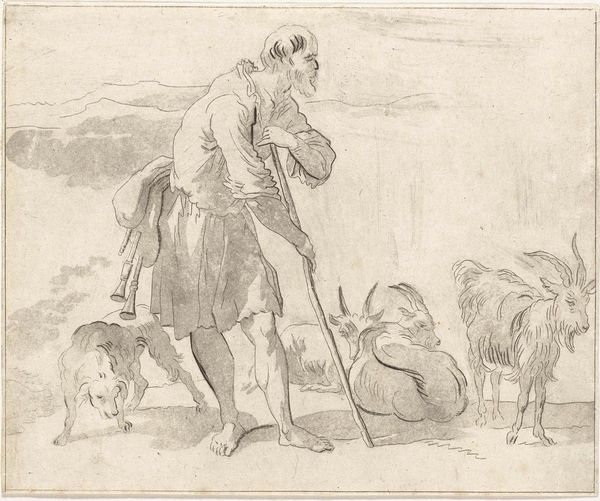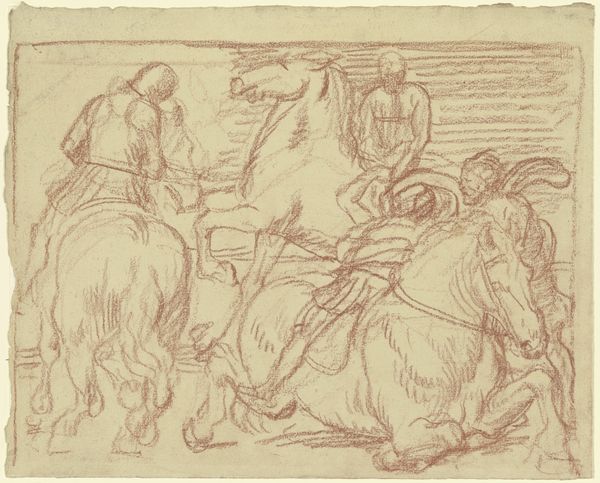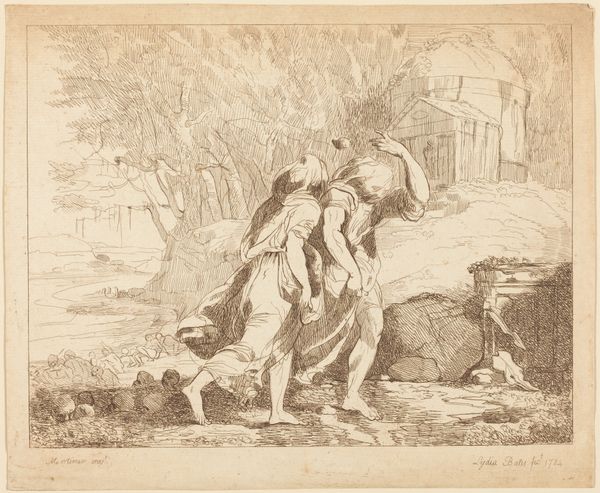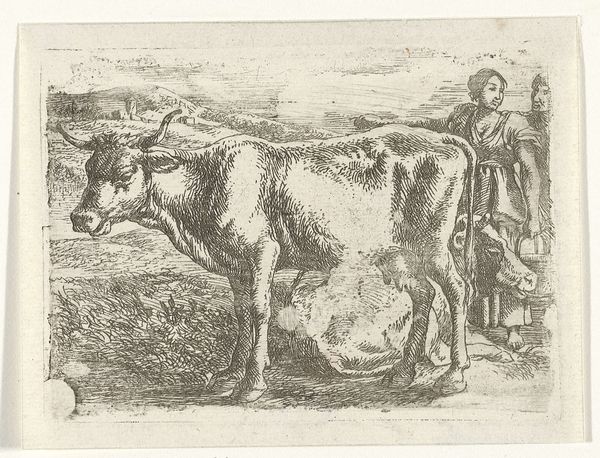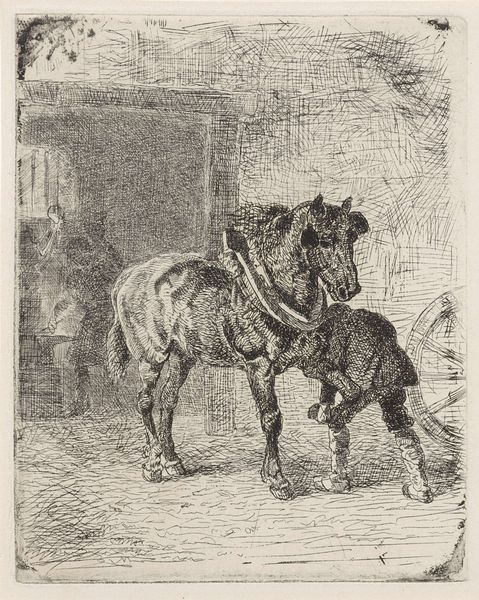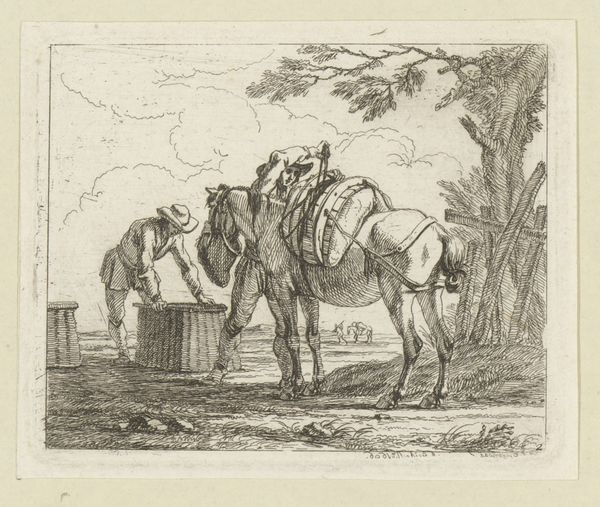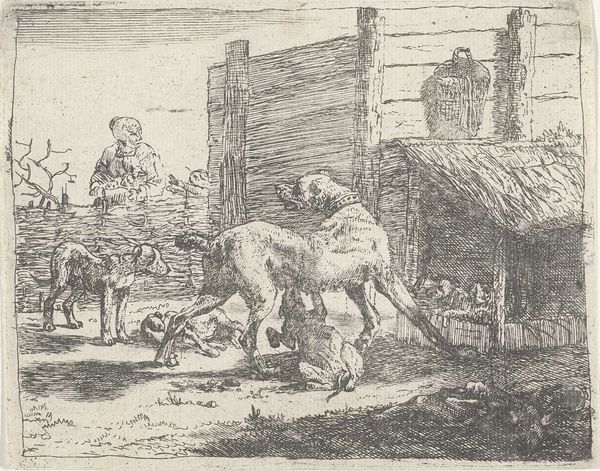
etching
#
baroque
#
etching
#
landscape
#
genre-painting
Dimensions: height 93 mm, width 113 mm
Copyright: Rijks Museum: Open Domain
Jan van Ossenbeeck created this tiny etching, titled "Pakezel," sometime in the mid-17th century. Etching is an indirect process; the artist covers a metal plate with a waxy, acid-resistant ground, then scratches through it with a needle. When the plate is bathed in acid, the exposed metal is eaten away, creating recessed lines that hold ink. The fineness of the etching process allowed Ossenbeeck to achieve an astonishing level of detail, giving texture to the donkey's fur and suggesting the weight of its burden. The composition implies the economic realities of the time. The man and donkey were vital to transporting goods and connecting communities; their labor, captured through the careful strokes of the artist, serves as a reminder of the interconnectedness of humans, animals, and the land. Paying close attention to materials and the process, as seen here, allows us to fully appreciate the social significance of even the smallest of artworks.
Comments
No comments
Be the first to comment and join the conversation on the ultimate creative platform.
